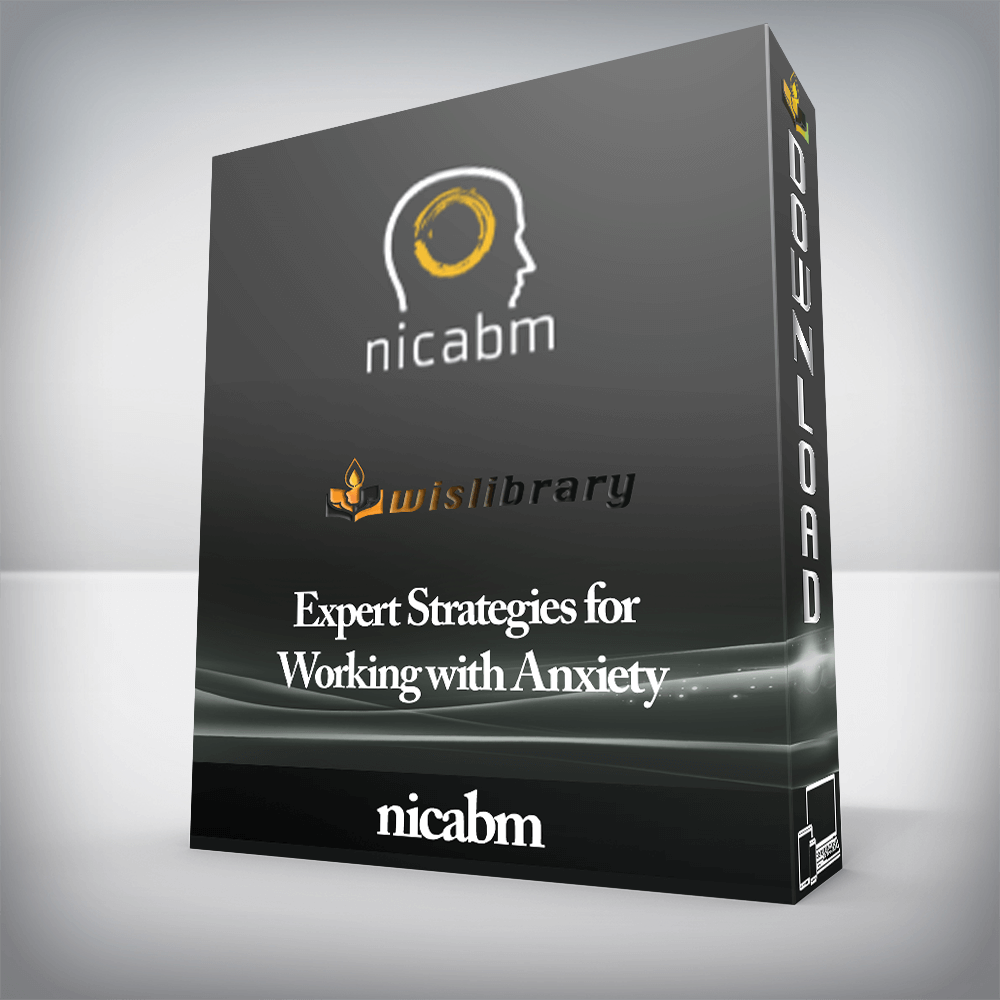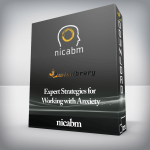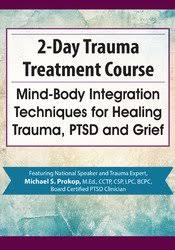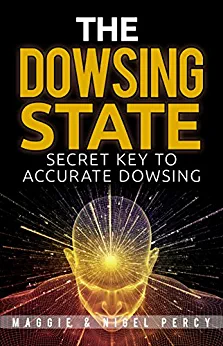nicabm – Expert Strategies for Working with AnxietyHelp Even Your Most Anxious ClientsAnxiety can cripple lives.It can suffocate our clients’ personal and professional growth, shut down their ability to start relationships and take away their freedom to choose their own destiny.The worst part? Without successful treatment, anxiety can then become a ravenous vacuum – sucking our clients’ confidence and talents and leaving them vulnerable to the “quick fixes†that only serve to sustain their fear.But to effectively treat anxiety, we have to first understand how it overwhelms a person’s ability to calm themselves. We have to look at the specific way ambiguity triggers anxiety and how what’s happening in the brain interacts with the physiological effects of panic to sustain a client’s anxiety.That’s why we put together this new short course . . . Expert Strategies for Working with AnxietyPractical Skills to Break the Panic-Anxiety LoopStephen Porges, PhD      Peter Levine, PhDJoan Borysenko, PhD      Kelly McGonigal, PhD The powerful neurobiological reaction that can sustain anxietyOne key strategy that can disrupt a panic attack (quickly – even if the client has a history of attacks)How a client’s panic physiology can undermine certain anxiety treatmentsFour Core Strategies to Neutralize Stress and AnxietyShelly Harrell, PhD      Kelly McGonigal, PhD      Rick Hanson, PhDThe hidden meaning inside of a client’s anxiety (and how this can impact the healing process)The F.A.C.T. strategy that can break rumination and ground a client to the presentHow to adjust an anxiety treatment when it threatens a client’s core valuesHow to Transform the Fear that Drives Anxiety Into ConfidenceChristine Padesky, PhD      Rick Hanson, PhDThe two-sided treatment framework for anxiety that can lead to quicker results with less relapseHow one shift from “thinking†to “imagining†can help your clients access the core fear behind their anxietyThe “block the exit†strategy that can help you define the specific anxiety disorder that a client is experiencingHow to Expand a Client’s Tolerance for AnxietySteven Hayes, PhD      Kelly Mcgonigal, PhD      Ron Siegel, PsyDSaying “Yes†– one practical strategy that can reboot a client’s ability to function with anxietyHow the mind can get tricked into interpreting progress as outcome during anxiety treatmentOne incremental change in the way a client deals with anxiety that can snowball into tremendous growthHow to Maximize the Power of a Client’s Coping StrategiesSue Johnson, EdD      Rick Hanson, PhDRon Siegel, PsyD      Kelly McGonigal, PhDWhy most anxiety coping techniques failHow to reframe anxiety to keep clients from being overwhelmed by emotionHow phobias quietly feed off of unprocessed attachment issuesHow to Work with the Root Pain of Highly-Anxious ClientsMichael Yapko, PhD      Ron Siegel, PsyDThe terrifying internal question that’s behind many clients’ anxiety (and why the real problem lies in the answer)Why ambiguity can be a direct trigger to clients who are prone to anxiety disorders“I don’t know†– three words that can have the most powerful lasting impact on clients recovering from anxietyHow to Work with Conflicting Sources of AnxietyPat Ogden, PhD      Richard Schwartz, PhDOne powerful non-verbal intervention that can disrupt the core belief driving a client’s anxietyThe paradoxical approach to a client’s panic attack that can dial down their fear and instantly ground themThe unique inner struggle that exacerbates anxiety that’s absorbed from an anxious parentHow to Help Clients See the Possibilities Beyond AnxietyScott Miller, PhD      Kelly McGonigal, PhDRon Siegel, PsyD      Joan Borysenko, PhDOne way to foster breakthroughs with anxious clients who have a history of unsuccessful therapyHow a sequential change to your intervention process could help anxious clients feel more empoweredHow to spark the seeds of growth inside anxiety that will leave a client brimming with possibilityHow to Address What Happens in the Brain When a Client is Consumed by AnxietyStan Tatkin, PsyD, MFT      Kelly McGonigal, PhD      Rick Hanson, PhDRon Siegel, PsyD      Joan Borysenko, PhDHow 10 minutes of focused attention can bump the brain out of an anxious rumination loopA simple strategy for holding clients in the present while blocking fearful anxious thoughtsFour powerful techniques to help anxious clients self-soothe when they’re all alonePractical Ways to Diminish the Inner Experience of AnxietyKelly McGonigal, PhD      Ron Siegel, PsyD      Rick Hanson, PhDOne mindset shift that can free clients from the “quick fixes†that have been defining their life with anxietyAn evidence-based strategy to increase function and reduce stress by focusing on anxiety’s “good†sideHow to help clients find the true source of their anxiety trigger (it’s often hidden in their values)How to help clients with OCD experience fewer obsessive intrusions Course DirectorRuth Buczynski, PhDDr. Ruth Buczynski is a licensed psychologist and founder and president of The National Institute for the Clinical Application of Behavioral Medicine (NICABM). NICABM helps physicians, nurses, psychologists, social workers, and counselors – practitioners who have some of the most significant and life-changing missions on the planet – provide cutting-edge, research-based treatment strategies to their patients. For more than 35 years, NICABM has offered accredited training and professional development programs to thousands of practitioners worldwide.Here’s What You’ll Get:Everything is yours to keep forever in your professional libraryDownloadable videos so you can watch at your convenience, on any deviceAudio recordings you can download and listen to at home, in the car, at the gym or wherever you likeProfessionally-formatted transcripts of the sessions, to make review and action simpleTwo downloadable bonuses to help you work more effectively with anxiety Starting Today, This Program Can Change the Way You PracticeWhy the Transcript Is Essential: Click the image to enlargeThe transcript makes it easy to go back and double check concepts, citations and names that are mentionedWe put in a table of contents to make it easy for you to find the exact part of the webinar you needHaving the concepts already written allows you to take notes on how you’re going to use the ideas rather than transcribing the ideasSome people simply learn better by reading than by listening or watchingYou will be able to print out and share techniques presented in the session with your patientsThere are no reviews yet.Add a Review Cancel replyYou must be to post a review.
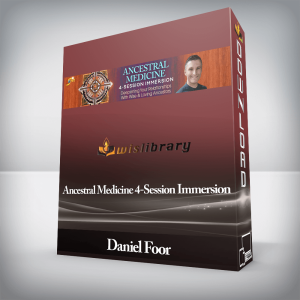 Daniel Foor – Ancestral Medicine 4-Session Immersion
₹5,644.00
Daniel Foor – Ancestral Medicine 4-Session Immersion
₹5,644.00
 Laura Silva – Silva Lifestyle
₹6,972.00
Laura Silva – Silva Lifestyle
₹6,972.00
nicabm – Expert Strategies for Working with Anxiety
₹2,822.00

